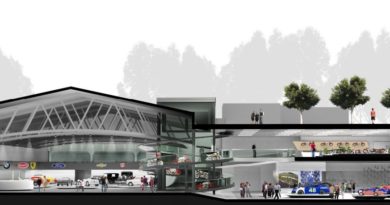New Car Review – 2012 BMW 1 Series
Turn a dream into your driveway
By Eric Peters
BMW’s 3-Series coupe/convertible is a car that many car lovers dream about. Most of these dreamers, unfortunately, awake in the morning to the harsh reality of the Three’s economic inaccessibility: A 335i convertible is a $52k car; the base model hardtop 328i coupe starts at almost $38k. $44k for the more powerful 335i.
But what if you could get the Goods that make the Three so appealing — including the identical engine lineup and even better performance in a smaller/lighter overall package — for about eight grand less to start?
What It Is
The 1-Series is BMW’s entry-level coupe/convertible, similar in looks and layout to the popular 3 Series coupe/convertible but priced more affordably. A 128i has an MSRP of $30,950. The more powerful 135i coupe stickers out at $39,050. The soft-top 128i starts at $36,600; $43,800 for the 135i.
What’s New for 2012
The 2012s get a new front clip and revised interior controls/trim, including available Galvanized Pearl Gloss finish.
What’s Good
Same engines/drivetrains as the more expensive 3-Series, but the lighter One is quicker and faster than the heavier, larger – and more expensive – Three. Outstanding handling. Back seats are there.
What’s Not So Good
Unlike the Three, the One is not available in sedan form. High-mileage (and high-performance) diesel that’s available in the Three not offered in the One. Back seats are barely there.
Under the Hood
The I-Series offers two engine choices, both in-line DOHC sixes with variable valve timing and identical in every way to the engines used in the larger/heavier 3-Series. The 128i coupe/convertible is powered by a 3.0 liter version of the BMW in-line six that’s rated at 230 hp. It’s paired with either a six-speed manual or six-speed automatic. The 135i is also powered by a 3.0 liter DOHC six — but this engine is boosted with twin sequentially staged turbos to 300 hp. This engine not only offers 70 more horsepower, but also a triple-digit uptick in torque output (300 lbs.-ft. vs. the base engine’s 200 lbs.-ft.). This engine can be partnered with the six-speed manual or BMW’s seven-speed dual-clutch DCT automated manual. Both versions of the One are quick.
On the Road
Everything you expect from a BMW sports car is here — surgically precise, perfectly weighted steering; that sense of absolute confidence in the car that gives you confidence in yourself. The shorter wheelbase (104.7 inches vs. 108.7 inches) and lower curb weight also give the 1-Series a lighter — and arguably, more sporty — feel than the larger/heavier 3-Series. And on the other end of the scale, it’s not as twitchy as the very short wheelbase (98.2 inches) Z4 two-seat roadster, which like many high-powered, short-wheelbase roadsters can get skittery when you lay on (or back off) the throttle in a tight turn. The twin-turbo 135i pulls like a ’60s-era V-8 muscle car to its 7,000 RPM-plus redline but without the lumpy idle or the single digit gas mileage. The performance capability of the base 128i’s engine, meanwhile, is veryrespectable in its own right. Reality check: Six second 0-60 times are what most of the quickest V-8 powered muscle cars of the ‘60s and ‘70s could deliver.
At the Curb
This is subjective — your opinion may differ — but I think the One looks tighter and better proportioned than the Three. Being shorter definitely helps; there’s no excess overhang or superfluous panels anywhere. It’s like a leaner, younger, more in-shape version of the slightly thick-looking Three. The interior is a high point, too — as it is in all BMWs. Top-drawer materials (including sunlight reflecting material for the seats, to help keep your backside cool and the seat covers themselves from fading and eventually cracking and splitting) and a simple, effective overall layout. But the best part is there’s no need to pore over an owner’s manual for hours to figure out how the radio works, or spend weeks getting used to gratuitously over-elaborate controls. The notorious iDrive controller is available, but thank the Motor Gods, it’s optional. Both the trunk and the back seats are kind of tight — but at least they are there. Cramped back seats are better than no back seats at all.
The Rest
Safety-wise, the One convertible versions get their own unique head/side air bags that are positioned to provide the extra protection that the roof/side structure would otherwise provide – along with pop-up rollover bars in case the car flips. Manual-equipped cars get a hill-holder clutch that keeps the car from rolling backward when you start off on an incline. Excellent high capacity brakes with ABS and a “wipe” feature that keeps the rotors dry during wet weather driving by periodically (and very lightly) applying just enough pressure to the calipers to squeegee away any moisture as you drive are also included.
The Bottom Line
In the One, you can have your back seats, your rear wheel-drive performance — and your twin turbo six — for many thousands less than BMW asks for the otherwise similar, slightly larger Three.
Eric Peters is the author of “Automotive Atrocities” and “Road Hogs” (spring 2011) and a former editorial writer/columnist for The Washington Times, a contributor to Cars.Com, The CarConnection.com and AOL Autos, among others.

